Pantuns
by Norman Cho
The pantun is sometimes described as Malay poetry. It consists of stanzas made up of rhyming quatrains (4-liners). Its history was thought to have originated from golden period of the Malays during the 15th century. When a pantun is sung, it becomes the dondang sayang (melody of love). Normally, the last word of the first line would rhyme with that of the third line, and, the second line would rhyme with the fourth line. If this is not achievable, then the rhyme would just be at the first and third line, or, the second and fourth line.
Composing a pantun is no mean feat. One must first have an excellent grasp of the Malay vocabulary in order to select meaningful words to rhyme while remaining contextually precise, which is equally challenging. The first two lines of the stanza will describe a situation/scene while the next two lines will either provide a follow-up on the situation/scene or the meaning behind the situation/scene. Very often, the pantun would carry hidden meanings and one would need to read between the lines. In the old days, nyonyas could pass sarcasm through the subtlety of a pantun to unsuspecting peers! It takes wit to compose a pantun and intelligence to decipher its intended meaning.
Here is an example:
Chek Syed turun ka paya
Bua kana tiga persegi
Jangan di rompak ruma saya
Tiang nya batu dinding nya besi
Mr Syed went to the marsh
Triangular are the olives
Do not rob my house
Its pillars are stone and its roof metallic
(Intended meaning: I am but a poor person)
– Source: malaycivilization.ukm.my
Dondang Sayang is pantun in its sung form. This art-form was believed to have been originated from Malacca during the 16th century from the music that was brought in by the Portuguese when they colonised the settlement. Western musical instruments like the violin and the accordion would accompany the Malay drums and the gong. A topic would first be selected and an impromptu quatrain would be composed and sung using this quatrain as a challenge to another singer who must sing a reply in the context of the topic. It is indeed a challenge of wits and words!
The Babas and the Nyonyas are adept in the art of pantun which they had adopted from the Malays. One of the exponent of this art-form is Baba Koh Hoon Teck. Not only did he actively participated in the Dondang Sayang but even composed and published books on Pantuns which were published by his company, Koh and Company.
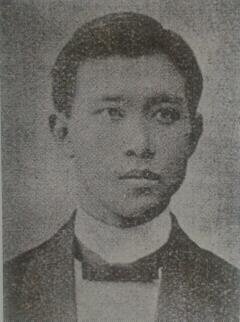
Koh HoonTeck (photo: Cheah, J. S. (2006). Singapore: 500 early postcards (p.11). Singapore: Editions Didier Millet.)
Koh Hoon Teck was laid to rest at Bukit Brown Cemetery and sent off with pantuns which was his dying wish. He died on Valentine’s Day 14th February 1956 according to an article.
Here’s a tribute to Koh at his tomb during the Peranakan Trail at Bukit Brown Cemetery in 2011
Mr. G.T Lye gives a spontaneous rendition of a pantun and shares some anecdotes at the tour, captured on video by Victor Yue
You can listen to a performance of dondong sayang by the late Baba William Tan
Date: 9 June Saturday
Time: 9am to 11.30 am
Meeting Place: At the entrance gates of Bukit Brown at Lorong Halwa .
We will be covering Hill 2 and 5 – the heavily staked area of the cemetery affected by the 8 lane highway and which also cuts through the most beautiful valley in Bukit Brown…. PLUS a bonus of Oon Chim Neo – the largest single occupant tomb, and in the same vicinity the recently exhumed tomb of Ong Seah Say – a member of the Tong Meng Hui – the band of men who supported Sun Yat Sen’s revolutionary cause. Guide Su Lin will share her experience of documenting his private exhumation. Your other Guide is Claire
Join them as they “usher” you around Bukit Brown, and introduce you to some notable pioneers who had made great contributions to Singapore in the first half of the 20th century, as well as common citizens with interesting and heart-warming stories to share. Many of them are affected by the 8-lane highway. We also discuss the historical context of their lives and times.
Do register interest by clicking join on the FB event page for Saturday
For information on how to get there and handy tips please visit
http://bukitbrown.com/
==========================
Date: 10 June Sunday
Time 9 am to 12 pm
Meeting Place: Under the large and beautiful, and possibly endangered, rain tree, at the Roundabout. After the main gate, go forward another twenty metres, to the right of the SLA office
Discover the who’s who of Hill 3 with Peter Pak. According to our API map, that would be groups 5, 6, 11 and 12. Peter’s emphasis will be group 6 area, in particular.He will be covering the largest tomb Ong Sam Leong. From there, heading down to Chew Boon Lay. We will also be visiting the beautiful Teochew tombs of Leow Chia Heng and Low Peng Soy.
Here’s a map :
http://bukitbrown.com/
Do register interest on the FB event page for Sunday
Registration:
Our weekend public tours are FREE …
Optimally the group size is 30 participants (15 individuals/guide).
==========================
General information:
The tour:
The Bukit Brown area is about 233 hectares in extent, bordered by Lornie Road, Thomson Road and the Pan-Island Expressway. It lies just to the south of the Central Catchment Forest, being separated from it by Lornie Road and includes Singapore’s only Chinese Municipal Cemetery. With more than 100,000 graves, Bukit Brown is also one of the largest Chinese cemeteries outside of China.
Don’t forget to bask in the peaceful surrounds, and also chat with your guides and make friends with other participants. We are amateurs and volunteers, but we are passionate and serious about what we do at Bukit Brown, and we encourage sharing of knowledge.
==========================
Please take note:
1. We will be walking mainly on paved roads. But there are hill treks so dress appropriately, especially your footwear.
2. Wear light breathable clothing. Long pants and long sleeves if you are prone to insect bites or sunburn. Bring sun block and natural insect repellent.
3. Wear comfortable non-slip shoes, as safety is important. Walking sticks are recommended.
4. Do read up on Bukit Brown before going so you have a better understanding of the place (e.g. BukitBrown.com)
5. Do bring water, light snacks, poncho/umbrella, sunhat and waterproof your electronics.
6. A towel around your neck is a necessary fashion statement at Bukit Brown.
7. Please go to the toilet before coming. There are NO facilities anywhere there or nearby.
==========================
How to get there by MRT / Bus:
Bus services available: 52, 74, 93, 157, 165, 852, 855.
From North: Go to Marymount MRT and walk to bus stop #53019 along Upper Thomson Road. Take Buses 52, 74, 165, 852, 855
Alight 6 stops later at bus stop, #41149, opposite Singapore Island Country Club (SICC), Adam Road. Walk towards Sime Road in the direction of Kheam Hock Road until you see Lorong Halwa.
From South: Go to Botanic Gardens MRT and walk to bus stop #41121 at Adam Road, in front of Singapore Bible College. Take Buses 74, 93, 157, 165, 852, 855. Alight 2 stops later at bus stop, #41141, just before Singapore Island Country Club (SICC), Adam Road. Cross the bridge, walk towards Sime Road; follow the road until you see Lorong Halwa.
By car:
Turn in from Lornie Road, to Sime Road. Then, turn left into Lorong Halwa.
Parking space available at the largish paved area near the cemetery gates.
The Purpose of Keeping Heritage sites is to Preserve the Physical Linkage between the Present and Past
When the relevant authorities were planning for the cemetery to give way to the highway, did they know the historical value of Bukit Brown? Or was it after the researchers and the public’s strong interest and views that they suddenly realised the importance of this site? If this is the case, it reflects a deeper layer of problem: do the upper echelons of our government officials seriously lack historical and cultural conciousness? Today Bukit Brown is affected, who is to say a similar problem will not happen in future?
More than 50 – 60 years ago, scholars like Tan Yeok Seong and Hsu Yun Tsiao did indepth research of Singapore heritage sites including cemeteries, and they also inspired later generation scholars to conduct more research.
Everyone knows that History is ever continuing, and we make use of the past to shine a torch for the future. The 19th century German philosopher Hegel once said, ” What we can see now is but the fruit of the past, and what history tell us is invariably to preserve the things left behind from the past. Hence keeping track of the development of history is like a water current, the further out it can flow, the more volume it can gather, and the more content it can generate.
The importance of preserving heritage sites is to keep the physical linkage between the past and the present. If we destroy each and every heritage site, it means destroying the links between the past and the present, it means cutting off the roots of our present generation, so that if the latter generations would like to know how their ancestors travelled the path before, they would not have the physical evidence to substantiate it
Continuous gathering of history knowledge and research should be the mission of our education sector, but alas this is where the weakness of our Singapore education lies. We should build upon the foundation of the past research done by our predecessors, expand and upgrade them to the next higher level.
Translated by Raymond Goh extracted from the article by Han Tan Juan
Original Article
早报网–从恒山亭到武吉布朗
(2012-05-31)
韩山元
… 开门见山
笔心
保留古迹的意义就在于保留古与今的一个实体的连接点。
武吉布朗坟山因为当局要修建高速公路,要把其中数千座坟墓清
远在武吉布朗之前,新加坡开埠初期有座大坟山在恒山亭后面(
碧山也是历史超过百年的广东人在本地最大的坟山,1819年
当年这些坟山被铲除,也曾有人提出异议,表示惋惜,但是其声
有关当局在考虑修建高速公路,须叫古墓让路时,事前知道不知
早在五六十年前,陈育崧、许云樵等学者对于新加坡的古迹(包
众所周知,历史是有延续性的,是承先启后的。19世纪德国哲学家
保留古迹的意义就在于保留古与今的一个实体的连接点,如果将
历史知识与研究也应该有延续性,历史知识的延续是教育界的任
Saturday 26 May No Morning Tours
Instead an afternoon tour at 1600-1730 from the good people at Post Museum
“We would like to invite you to join us for OutPost 15: Intro to Bukit Brown this Saturday (26 May). It’ll be a lovely guided walk around the lush forested area “which is the resting place of 100,000 members of our pioneering generations. Email admin@post-museum.org to get one of the 15 spaces available”.
More information available here
Bukit Brown Tour on Sunday, 27 May 2012
09:00 until 12:00
|
Come for a leisurely stroll with our volunteer Guides: Peter and Keng Kiat (97903886), as they bring you around Bukit Brown, and introduce you to some notable pioneers who had made great contributions to Singapore in the first half of the 20th century. Many of them are affected by the 8-lane highway. We also discuss the historical context of their lives and times.
Date: 27 May, Sunday
Time: 9am to 12pm Meeting Place: Under the large and beautiful, and possibly endangered, rain tree, at the Roundabout. After the main gate, go forward another twenty metres, to the right of the SLA office For information on how to get there and handy tips please visit To register interest, please join this event on facebook here
========================== Registration: Our weekend public tours are FREE … Please click ‘Join’ on the FB event page to let us know you are coming, how many pax are turning up, or just meet us at the starting point at 9am. We meet there rain or shine. ========================== The tour: The Bukit Brown area is about 233 hectares in extent, bordered by Lornie Road, Thomson Road and the Pan-Island Expressway. It lies just to the south of the Central Catchment Forest, being separated from it by Lornie Road and includes Singapore’s only Chinese Municipal Cemetery. With more than 100,000 graves, Bukit Brown is also one of the largest Chinese cemeteries outside of China. We will start with a safety briefing and quick history and geography of the grounds. Don’t forget to bask in the peaceful surrounds, and also chat with your guides and make friends with other participants. We are amateurs and volunteers, but we are passionate and serious about what we do at Bukit Brown, and we encourage sharing of knowledge. Here is a map of the grounds: We will not cover Ong Sam Leong’s (the largest tomb), nor will we visit Chew Geok Leong (with the coloured Sikh Guards). However, if there is time and repeat visitors who already know the way, they could show you how to get there. ========================== Please take note: 1. We will be walking mainly on paved roads. But there are hill treks so dress appropriately, especially your footwear. 2. Wear light breathable clothing. Long pants and long sleeves if you are prone to insect bites or sunburn. Bring sun block and natural insect repellent. 3. Wear comfortable non-slip shoes, as safety is important. Walking sticks are recommended. 4. Do read up on Bukit Brown before going so you have a better understanding of the place (e.g. BukitBrown.com) 5. Do bring water, light snacks, poncho/umbrella, sunhat and waterproof your electronics. 6. A towel around your neck is a necessary fashion statement at Bukit Brown. 7. Please go to the toilet before coming. There are NO facilities anywhere there or nearby. ========================== How to get there by MRT / Bus: Bus services available: 52, 74, 93, 157, 165, 852, 855. From North: Go to Marymount MRT and walk to bus stop #53019 along Upper Thomson Road. Take Buses 52, 74, 165, 852, 855 From South: Go to Botanic Gardens MRT and walk to bus stop #41121 at Adam Road, in front of Singapore Bible College. Take Buses 74, 93, 157, 165, 852, 855. Alight 2 stops later at bus stop, #41141, just before Singapore Island Country Club (SICC), Adam Road. Cross the bridge, walk towards Sime Road; follow the road until you see Lorong Halwa. By car: |
The Guiding Guides Tour By Raymond Goh
Date: Saturday 19 May
Time: 8.30am – 11.30am
We are opening up to the public just 10 places to join a training tour conducted by Raymond for out student volunteers. The route covers the most “staked” area in Bukit Brown, Blocks 5 and 2 and pass the beautiful valley where the highway bridge will traverse. It starts off with the largest single tomb located off Kheam Hock Road belonging to Oon Chim Neo, stake number 77. Please meet for this tour outside the gates at the junction of Lorong Halwa and Kheam Hock.
For information on how to get there and handy tips please visit
http://bukitbrown.com/
Registration:
Please click ‘Join’ on this FB event page We meet rain or shine. For more information on getting there, please scroll down page for more details.
Time: 8.30am to 12pm
Date: 20 May, Sunday
Time: 8.30am to 12pm
Meeting Place: Under the large and beautiful, and possibly endangered, rain tree, at the Roundabout. After the main gate, go ahead another twenty metres, to the right of the SLA office
For information on how to get there and handy tips please visit
http://bukitbrown.com/
==========================
Registration:
Our weekend public tours are FREE …
Optimally the group size is 30 participants (15 individuals/guide).
Please click ‘Join’ on this FB event page to let us know you are coming, how many pax are turning up, or just meet us at the starting point at 9am. We meet there rain or shine.
==========================
The tour:
The Bukit Brown area is about 233 hectares in extent, bordered by Lornie Road, Thomson Road and the Pan-Island Expressway. It lies just to the south of the Central Catchment Forest, being separated from it by Lornie Road and includes Singapore’s only Chinese Municipal Cemetery. With more than 100,000 graves, Bukit Brown is also one of the largest Chinese cemeteries outside of China.
We will start with a safety briefing and quick history and geography of the grounds, and share with you the story of a man with a duo identity …
We will take a leisure climb to pay respect to a school founder, as the actual school teachers and students had recently done so …
We then take a side track and visit one of the important founders of Bukit Brown, who thankfully is not affected by the proposed highway …
Another arduous climb, and we will drop in on three neighbours from Semarang (Central Java) …
No visit to Bukit Brown is complete without visiting the biggest tomb there, as well as the famous coloured Sikh Guards …
And there are more, if you can keep up with us …
Don’t forget to bask in the peaceful surrounds, and also chat with your guides and make friends with other participants. We are amateurs and volunteers, but we are passionate and serious about what we do at Bukit Brown, and we encourage sharing of knowledge.
Here is a map of the grounds:
http://bukitbrown.com/
We will be covering several pioneers in groups 5, 6, 11 and 12.
==========================
Please take note:
1. We will be walking mainly on paved roads. But there are hill treks so dress appropriately, especially your footwear.
2. Wear light breathable clothing. Long pants and long sleeves if you are prone to insect bites or sunburn. Bring sunblock and natural insect repellent.
3. Wear comfortable non-slip shoes as safety is important. Walking sticks are recommended.
4. Do read up on Bukit Brown before going so you have a better understanding of the place (e.g. BukitBrown.com)
5. Do bring water, light snacks, poncho/umbrella, sunhat and waterproof your electronics.
6. Please go to the toilet before coming. There are NO facilities anywhere there or nearby.
==========================
How to get there by MRT / Bus:
Bus services available: 52, 74, 93, 157, 165, 852, 855.
From North: Go to Marymount MRT and walk to bus-stop #53019 along Upper Thomson Road. Take Buses 52, 74, 165, 852, 855
Alight 6 stops later at bus-stop, #41149, opposite Singapore Island Country Club (SICC), Adam Road. Walk towards Sime Road in the direction of Kheam Hock Road until you see Lorong Halwa.
From South: Go to Botanic Gardens MRT and walk to bus-stop #41121 at Adam Road, in front of Singapore Bible College. Take Buses 74, 93, 157, 165, 852, 855. Alight 2 stops later at bus-stop, #41141, just before Singapore Island Country Club (SICC), Adam Road. Cross the bridge, walk towards Sime Road, follow the road until you see Lorong Halwa.
By car:
Turn in from Lornie Road, to Sime Road. Then, turn left into Lorong Halwa.
Parking space available at the largish paved area near the cemetery gates.
饮水思源 Remember The Source of the Water
Elizabeth Ong and Emma Lim
By Catherine Lim
In 2002 in London and Scotland, two Singapore couples stationed in the United Kingdom, welcomed new arrivals, both girls. Born four months apart, the Ongs in London named their daughter Elizabeth and she was their second child. The Lims in Scotland named their daughter, Emma and she was their first born
In 2006, after 13 years abroad, the Ongs returned home to Singapore because they felt it was time for their young family to root themselves to their country and they returned to the family home which with their children now houses 4 generations. Their children, elder brother Alexander to Elizabeth were enrolled in Nanyang Primary School and because they were still very young adapted well.
In 2010, the Lims after 12 years abroad returned home for very much the same reasons, to be with family and reconnect to their homeland. By then Emma had a brother and a sister. Their grandparents had visited them frequently when they were in Scotland and the grandchildren settled down comfortably in Singapore, all under one roof. Emma was able to enroll in Nanyang Primary School.
In 2011 Elizabeth and Emma met for the first time. They barely spoke in the first term of school but by term two their friendship just took off. Both are in the choir; Emma sings alto, and Elizabeth second soprano. Their passions are artistic. Dance lessons for Emma every weekend, and Elizabeth has been talking art lessons since 2007. Their mothers met and play dates were arranged whenever the girls had free moments in their busy schedules of school and extra curricula activities. But mostly the girls just text each other when apart.
As their friendship grew so did their mothers’. It was not long before they realised they had similar experiences of living abroad and coming home. When their husbands came into the picture, the Ong and Lim families found a deeper connection which reached back into Singapore’s past and found another friendship which their daughters’ echoed.
Elizabeth, is the great great granddaughter of Singapore pioneer and scholar Khoo Seok Wan and Emma is the great great great granddaughter of another luminous pioneer, Lim Boon Keng.
Lim Boon Keng and Khoo Seok Wan
By Ang Yik Han
One was the dapper son of a rich rice merchant from China, a poet and scholar who sat for the Imperial exams. The other was a local born Western trained doctor, recognised by government and society as one of the leading voices of the Straits Chinese community. Khoo Seok Wan and Lim Boon Keng made an unlikely pair of friends. But the historical and political milieu of their times gave birth to unlikely pairings.
Both men were supporters of the reformist movement in China which sought to re-vitalise the Qing Dynasty. Khoo founded the Thien Nan Shin Bao, a local Chinese newspaper sympathetic to the reformist cause; Lim Boon Keng was its English editor. Subsequently, Lim and his father-in-law took over another Chinese newspaper which also adopted the reformist line.
When Kang Youwei, the leader of the reformists, fled China after the Reform’s failure, Khoo offered him shelter in Singapore and sucour for the cause. With the threat of assassins dispatched by the Qing government hanging over Kang, Lim worked with Khoo and the Straits Settlements authorities to protect him. Kang moved three times during his short stay of five months in Singapore. The first two places were properties belonging to Khoo Seok Wan and the third hideout was none other than Lim Boon Keng’s house.
The two also combined their efforts in education and social reform. They established the Singapore Chinese Girls School with other progressive members of the Chinese community at a time when the proper place of women was at home and female education was look upon with disdain. Half of the funds for the school ($3000) were contributed by Khoo Seok Wan and both men served on the inaugural Board of the school.
Khoo’s role in society was greatly diminished in the years following his bankruptcy. He became destitute and had to scrap a living with his pen. Even then, the friendship continued.
The Ong family has in their possession a book of calligraphy and original paintings which belonged to Khoo Seok Wan.
This book bears the signatures of various guests who had the honour of leafing through it, including Lim Boon Keng who visited in February 1927. By then, his full time job was the Chancellor of the Amoy University. Lim’s occasional trips back to Singapore were primarily for the never ending task of raising funds for the University, yet somehow he found time to visit his old friend. This signature is testimony to their enduring friendship.
Post script on Emma and Elizabeth
Emma on her friend, Elizabeth:
Elizabeth is pretty and cute.
Elizabeth is smart, funny and my BFF.
Elizabeth has a kind heart and always helps me when I am in need.
Elizabeth on her friend, Emma:
Emma is my BFF and she is fun and exciting to be with.
She always sticks by me through thick and thin.
Emma is pretty and she is a true friend to me.
Dateline 2 May 2012 at Bukit Brown.
This magnificent creature was “captured” this morning by Georgina Chin the accidental photographer. She writes of the moment:
” He was brave and stood on a perch like forever and didn’t move. I sat and just watched him. He was soaked . I was soaked. I call him white socks.”
About Georgina:
She is the photographer and writer of the book “Birds in my Backyard.” Bukit Brown is literally her backyard as she lives off Lornie Road. Georgina started birdwatching in 2009.
by Andrew Tan
In Bukit Brown Cemetery, an avenue, like prime real estate, connects Singapore’s prominent families—all inter-related, as these powerful cliques were linked by arranged marriages to perpetuate their wealth and influence through six generations, during 150 years of British rule (1819 to 1959).
Chronology
1819-1867 Beginnings
The earliest Asian elites in Singapore were comprador-kapitans from Malacca, who brokered with European (mainly British) companies, exclusive credit and arms deals. To procure native products for Europeans, compradors resourced from powerful clan headmen who controlled the supply of coolie labour, ships, and native products—crucial to entrepot success. Business partnerships were tied by arranged marriages between all families.
Family examples: Tan Tock Seng and his family network supplied and distributed manufactures for the British “country traders”; they also married influential relatives of the compradors and Kapitan Cina. Together, this was the first powerful clique in Singapore, which broadened (after Singapore’s cessation as entrepot of the opium-arms trade following British victory over Qing China) to include revenue farmers and labour contractors as their enterprises penetrated Southeast Asia.
1867-1900 Rise
From 1867, with Singapore a crown colony, the long established families recruited scholars and professionals as sons-in-law, to perpetuate their vested interests (e.g. tax-free “free trade” policies, opium farms, colonial intervention in tin-rich Malaya) through positions in the advisory board and councils at the municipal, rural and legislative level; appointments rotated among relatives (who advised the Governor on nominations) to ensure advantageous policy continuity.
The immediate decades after Suez Canal opened in 1869 diverted oceanic traffic through Singapore. To compete internationally, merchant families pooled their resources into joint-venture consortiums (in steamships); their offspring intermarried too. Ties between in-laws counted more than paper contracts.
Family examples: Notable Queen scholars (Lim Boon Keng, Song Ong Siang etc) and other top professionals were sons-in-law of well established merchant-shipping families like the Wee-Ho Hong-Lee group, as well as others who partnered in Straits Steamship.
1900-1941 Peak
Insatiable demand for World War One commodities (tin, rubber) produced the first multi-millionaires in Singapore: these nouveaux-riches—their heirs and heiresses were courted and charmed by Old Money. Merging New Money with Old gave birth to multifamily-owned conglomerates (e.g. OCBC, UOB, Straits Steamship) tying together banks, ships, plantations, factories and newspapers.
Large fortunes would aggrandize social ambition: Plutocrats usurped collective and consular institutions (e.g. Ngee Ann Kongsi, Chinese Chambers of Commerce), to connect with powerful Chinese warlords of lucrative market potential, offering to regimes funds for schools and humanitarian relief, using family-controlled newspaper editorials to galvanize mass involvement.
Ability to lead the Chinese masses into action was recognized by the British military; however, these plutocrats on war councils were relocated with their families to India just weeks before the Japanese Occupation.
Family examples: Families from shipping, commodities, revenue farming, and remittances, co-founded the conglomerates of OCBC and UOB, with ties to the burgeoning sectors like film and publishing, and family connections in politics.
1945-1959 Turning Point
In postwar Singapore, enriched by military contracts in the Cold War, scions used their wealth to contest for elected self-government, but the expanded, impoverished electorate rejected these “rich men’s parties” (Progressive Party and Democratic Party, whose members were related, merged into the Liberal Socialist Party), in favour of a new regime, the People’s Action Party (PAP).
Family examples: Contracts were monopolized by consortiums who subcontracted to each other. Chain of suppliers for the British military coalesced and expanded to retail giants.
1959 onwards Decline
Following Singapore’s independence under the PAP, the old elites diminished in economic influence: their once-predominant, century-old monopoly of colonial contracts was overshadowed by the growth of public state-sector industries in partnership with foreign multinationals. Attrition too, their vast landholdings compulsorily acquired by the state for redevelopment.
Their hereditary clan-leadership in communities has been subsumed by government departments that fund and run all neighbourhood activities and amenities. More than cultural and community centres, clans were once the centre of powerful labour unions. They once ran schools; but today, the Education Ministry syllabus and compulsory mandarin has created a generation disconnected with their dialect heritage, previously stressed in clan schools.
Arranged marriages and pedigrees became obsolete as post-war mass education broadened careers and widened choices in life partners. Also, professionalization broke down class barriers. The Women’s Charter in 1961 ended the quasi-feudal family structure.
As Singapore developed to become a middle class society, a new breed of technocrats allied with the PAP replaced the Old Establishment.
A multifamily tree, with 1000 people from 100 families, 6 generations interlinked in strategic alliances from the late 1700s to now, will be published in 2012. I shed light on the influential cliques (made up of powerful families) who dominated Singapore’s society and economy past two hundred years. Andrew Tan
By Ng Yi Shu writing for The Online Citizen
The debate with regards to Bukit Brown had raged for close to a year. With LTA’s and MND’s go-ahead on the eight-lane highway and the call for moratorium on the highway gone unheeded, there is nothing the NGOs can do today to stop the destruction of our heritage. But with all honesty, will we remember the our ancestral heritage and culture?
Will we even care? This is a hard question that no one wants to answer, but still, it beseeches an answer. This is not a question about policy nor governance. This is a question about our society, identity and narrative in general. This is a hard question to answer.
It was only the destruction of the old National Library building that sparked the debate to determine which of the two important matters of urban development and heritage preservation was more important in our society. Personally, I am too young to remember the destruction of the old National Theatre, but I do remember as a young boy reading that the government was intending to destroy the old National Library and that some commemorative red bricks from the building would be sold to heritage enthusiasts. In retrospect, I understand why people chose to pay money to purchase a piece of history about to be destroyed – because a picture of a place, though it speaks a thousand words, cannot compare to the experience of a place humans remember.
That is the same reason I took the chance to visit my great-great grandmother’s grave at Bukit Brown. My family is lucky that the grave is a fair distance from the highway and that it would be preserved.
Until the next development comes along.
Fact is, many of us do not remember the past. Many of us chose to forget the stories we have been taught since young: that of the first pioneers of Singapore, what they had built and the traditions they practiced. I am also guilty of the same thing: my understanding of old Chinatown came from a museum trip and a trail around the area. I would have never visited Bukit Brown if I did not know of the personal connection my family and I had of that area.
In my personal opinion, forgetting is not a sin. The circumstances that made us forget were understandable – we were a young country with dreams – dreams that we would be wealthy enough someday. These same dreams took us overseas – to study, to work, or for some, to sightsee. These same dreams brought back other cultures. Our open nature allowed for a melting pot of cultures to happen. Then, technological advancement came, accelerating this melting pot. We yearned for Western modernity. We worked for it. We became wealthy as a nation. In the end, there was neither time nor interest in our heritage or culture.
Then came the great privatisation of our media and the introduction of cable TV. The transformation of the then Singapore Broadcasting Corporation into Mediacorp today was hailed by many back then as a move to increase of broadcasting freedoms. However, a culture of self-censorship ensued. This, coupled with our yearning for other, ‘better’ cultures caused Singaporean media to be overlooked. Affluent viewers purchased alternatives from other countries, which created huge followings – that of JPOP and KPOP.
But, will we remember?
Politically, yes. The Bukit Brown Highway will remain a sore point. Citizens had many concerns – ranging from how the development of Bukit Brown would allow for more foreigners to come here to the environmental and ecological impact. Others took offence to the preservation of SICC and questioned the reasons why the country club for the wealthy was not spared. The decision to build the highway will, to some, represent the indifference the government has towards the people. The controversy will raise into public consciousness the importance of tradition and culture.
But such a negative event should not be the trigger for us Singaporeans to start caring about our roots again. In fact, the onus should be on us to explore, to see and to experience our heritage. Those that have been kept – the Chinatown shophouses, Sri Mariamman Temple, Masjid Jamae… the list goes on. The onus should be on us to maintain the emotional connection we have to our past. It is, after all, our choice to remember; our choice to be rooted; our choice to belong.
From Bukit Brown’s Poet- in- Residence – a poem inspired by a little sparrow “captured” by Bukit Brown’s Photographer- in- Residence. Be inspired and be of good hope.
LITTLE SPARROW ON THE TREE
by Lim Su Min
What seeeth thou from up there,
Little sparrow on the tree
With thine tiny eyes thy vision cast
Across this cemetery?
Canst thou see the things unseen
Thousands upon thousands of souls in pain
Canst thou hear with thine tiny ears
Their plaintive cry for “peace again?
Little sparrow on the tree
Soar up to heaven to pray
To plead that these anguished souls
Would truely “Requiescite in pace” .
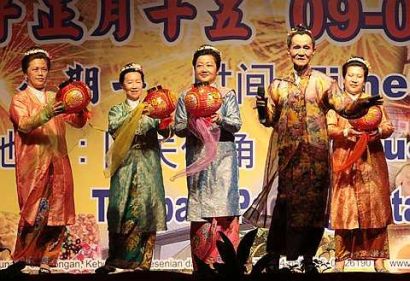
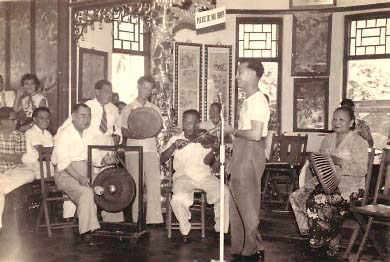


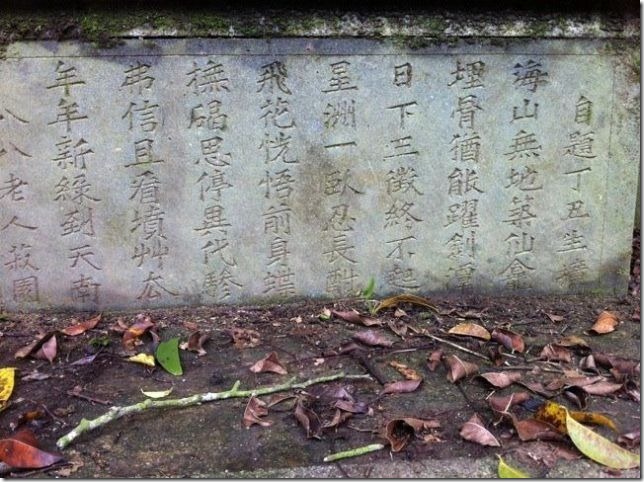

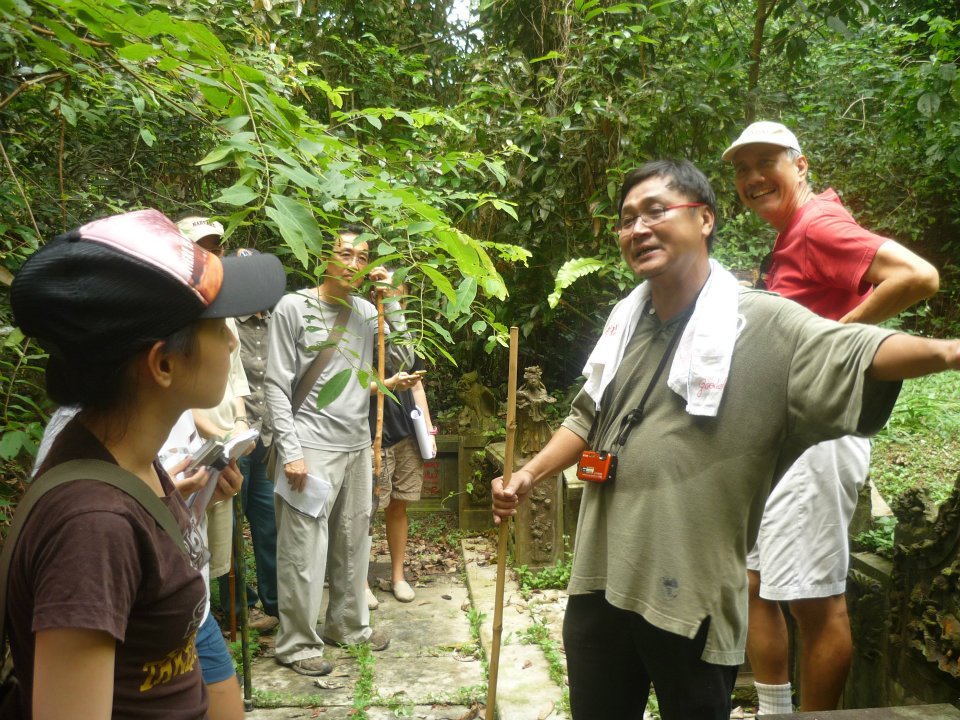
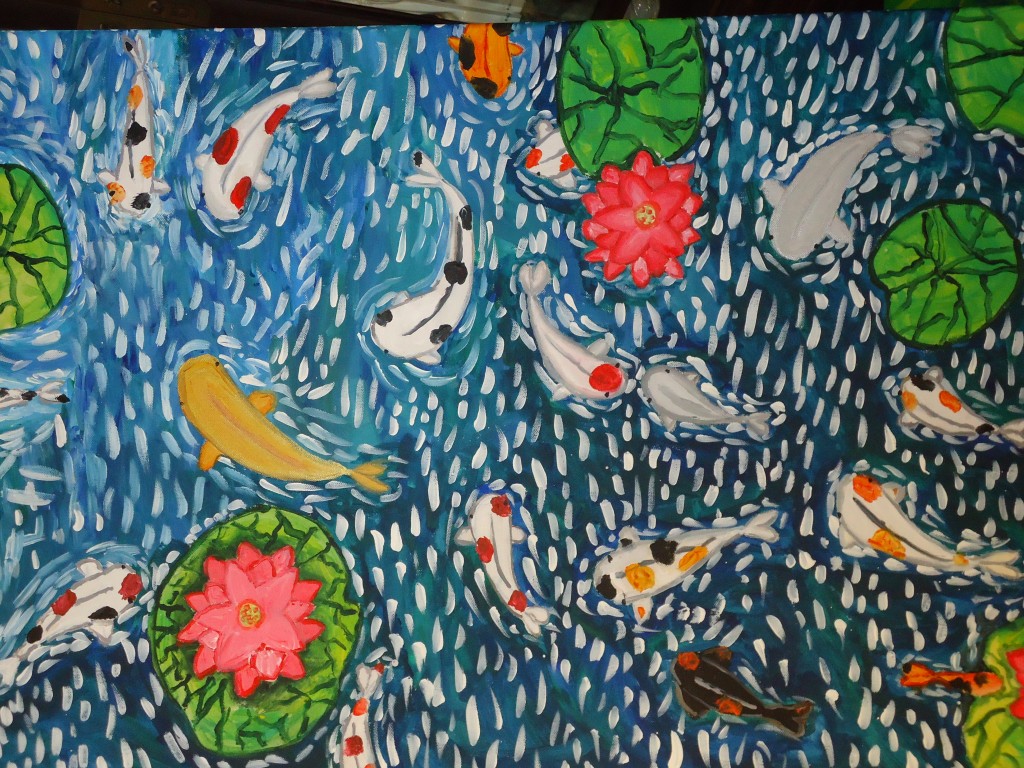
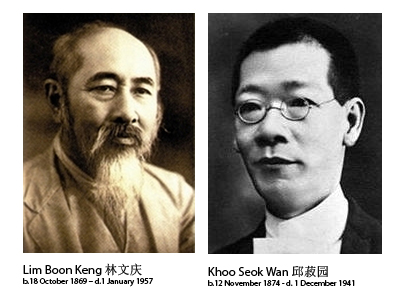
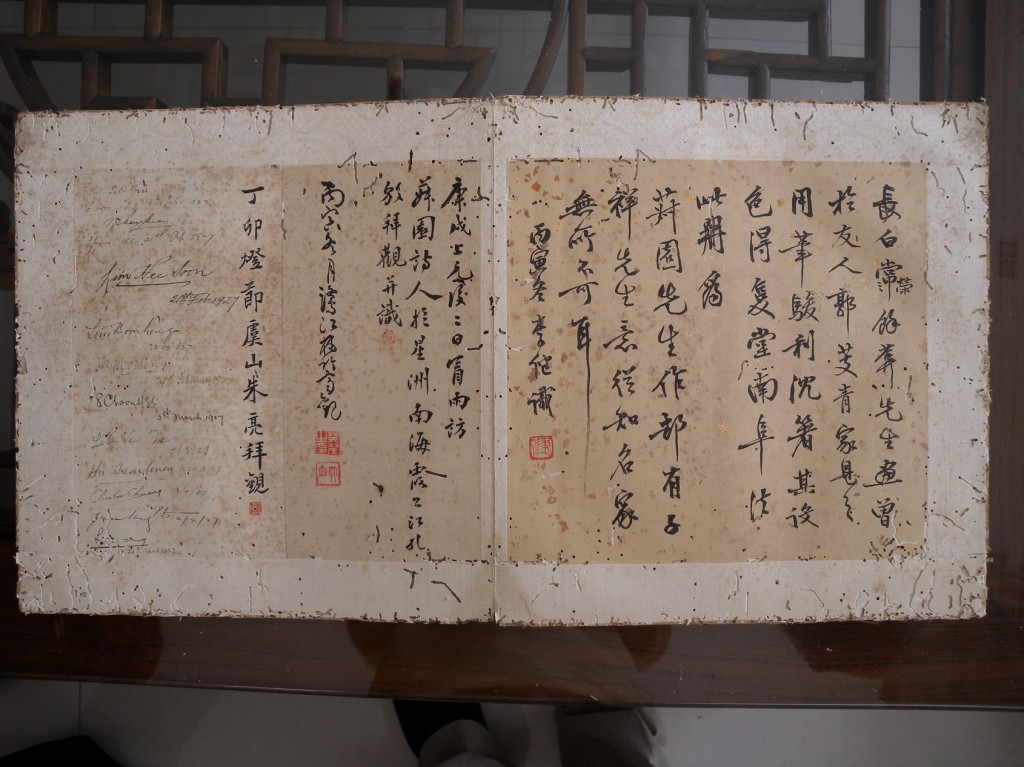
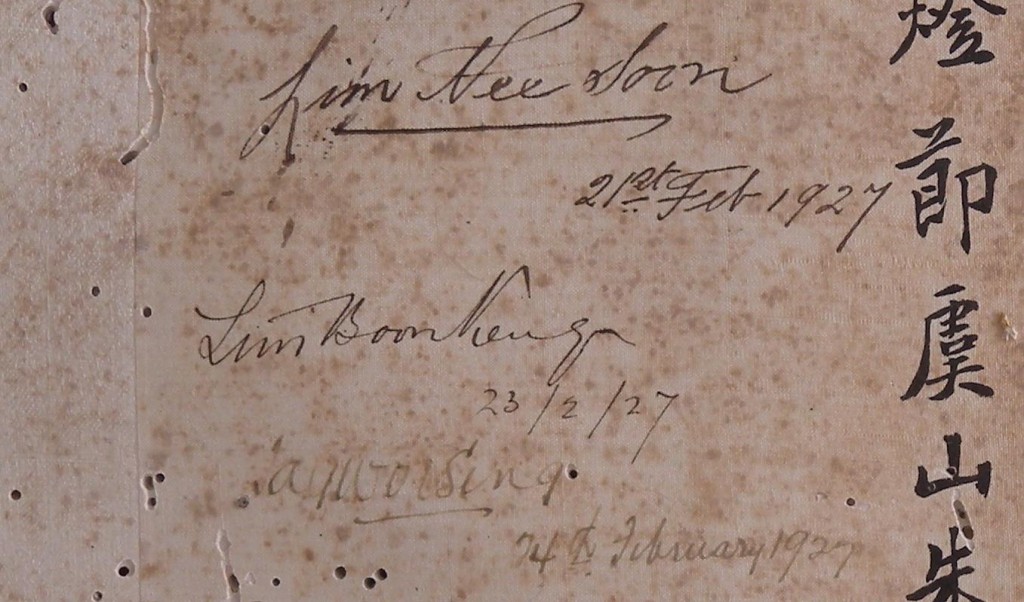
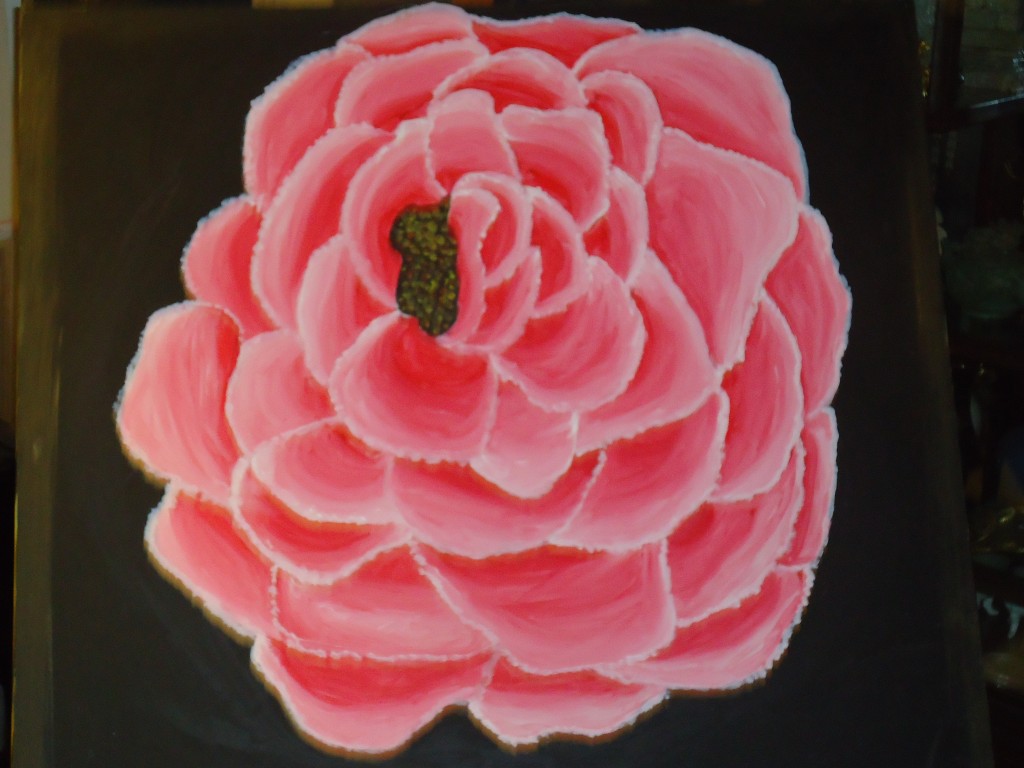
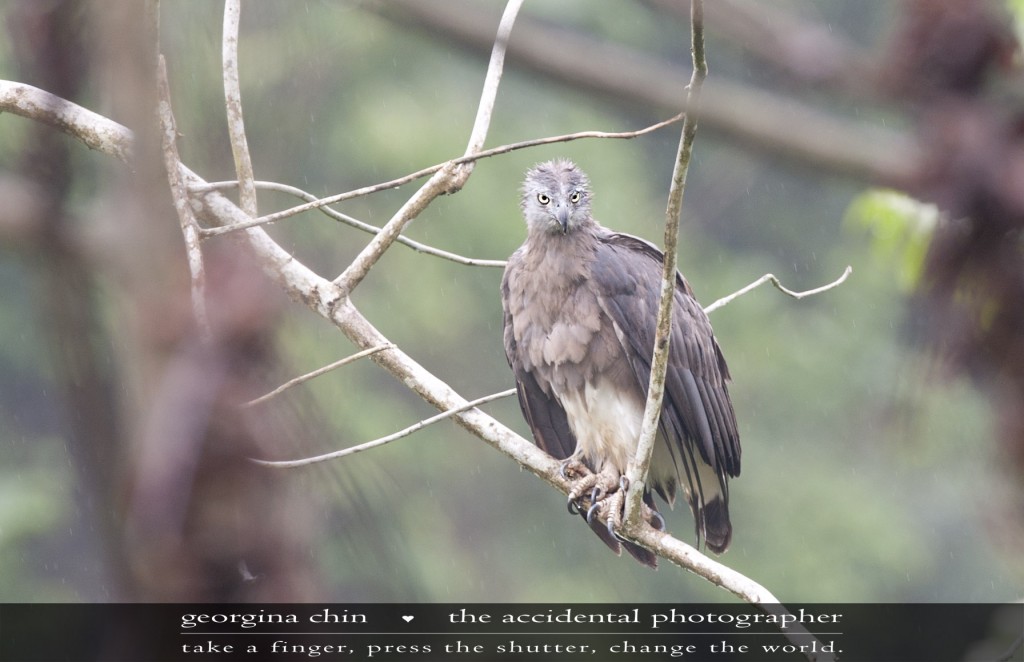
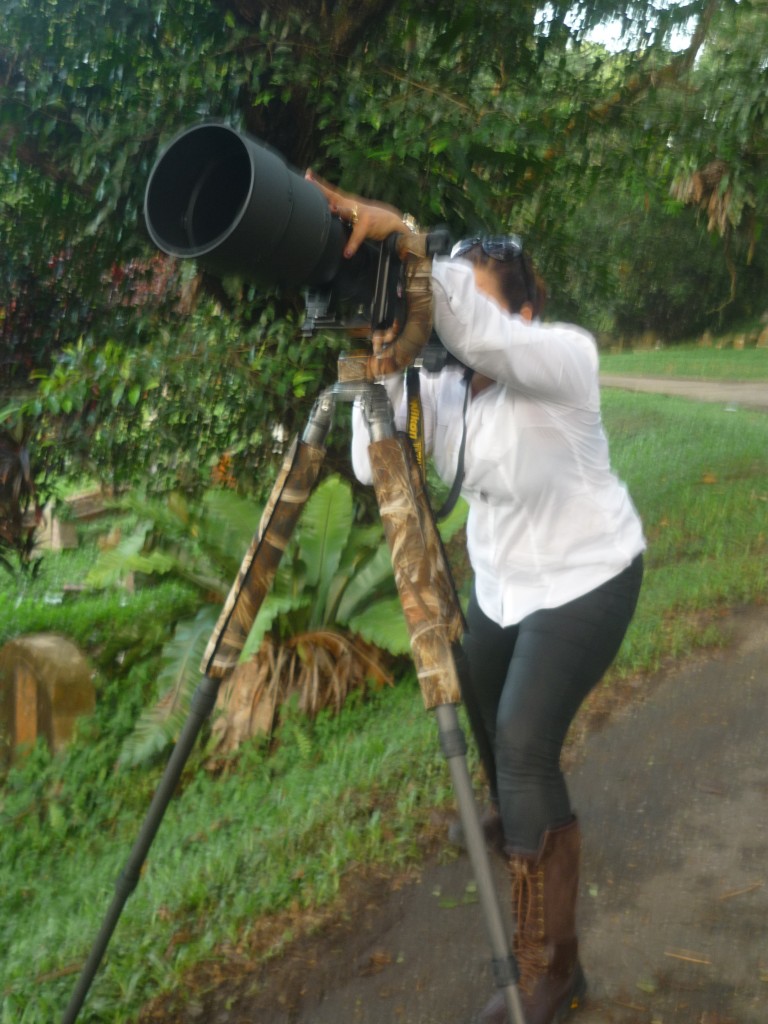

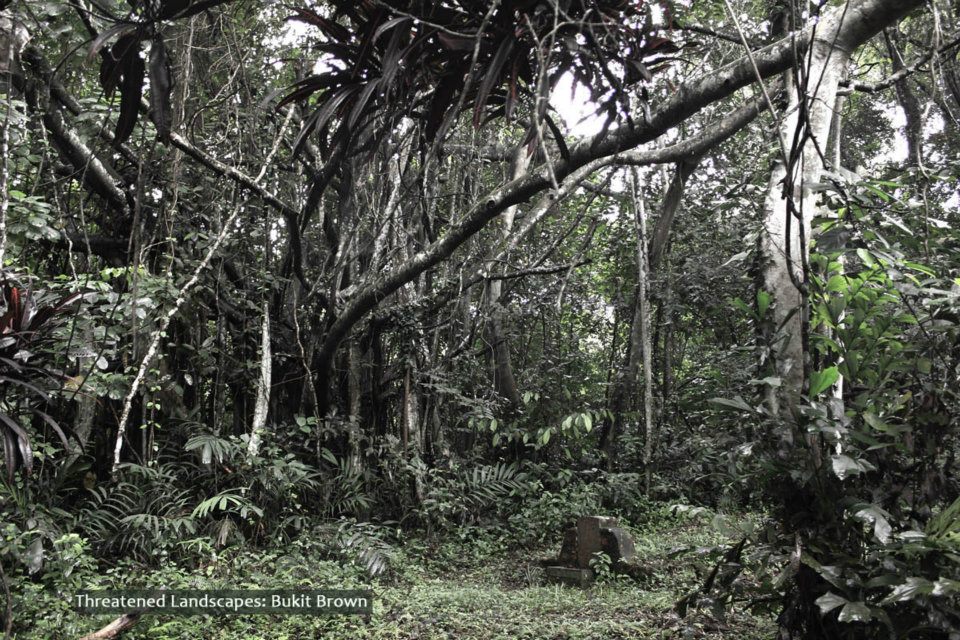
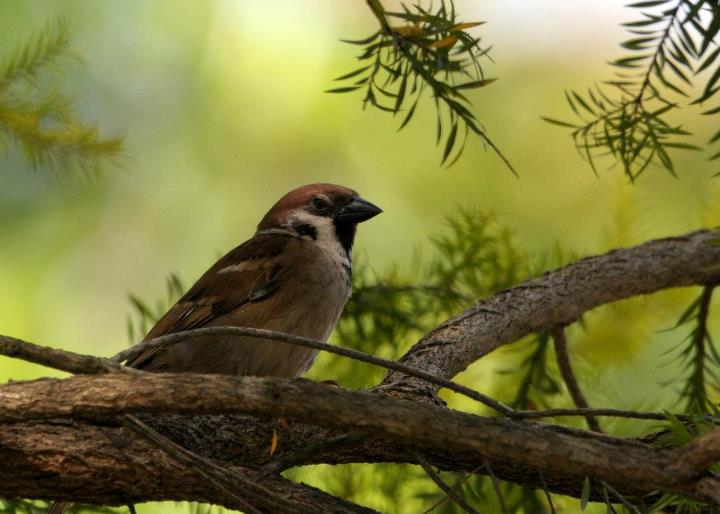
Recent Comments